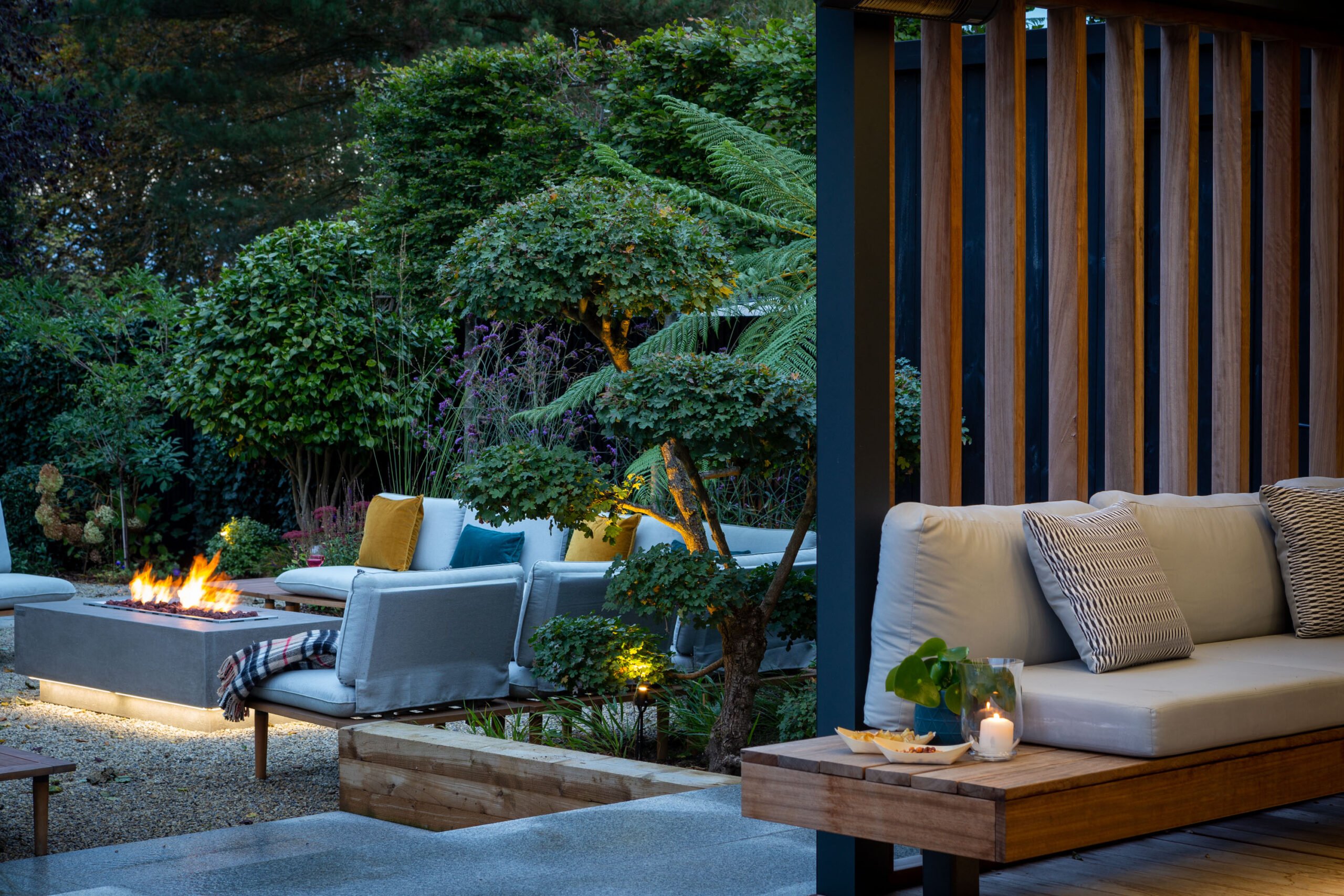
Beautiful gardens at night.
There’s still so much pleasure to take from our gardens and outdoor spaces in the evenings and as the nights draw in. The pandemic has shown how we can spend family and entertaining times outside at night with the right mix of lighting, furniture and warmth.
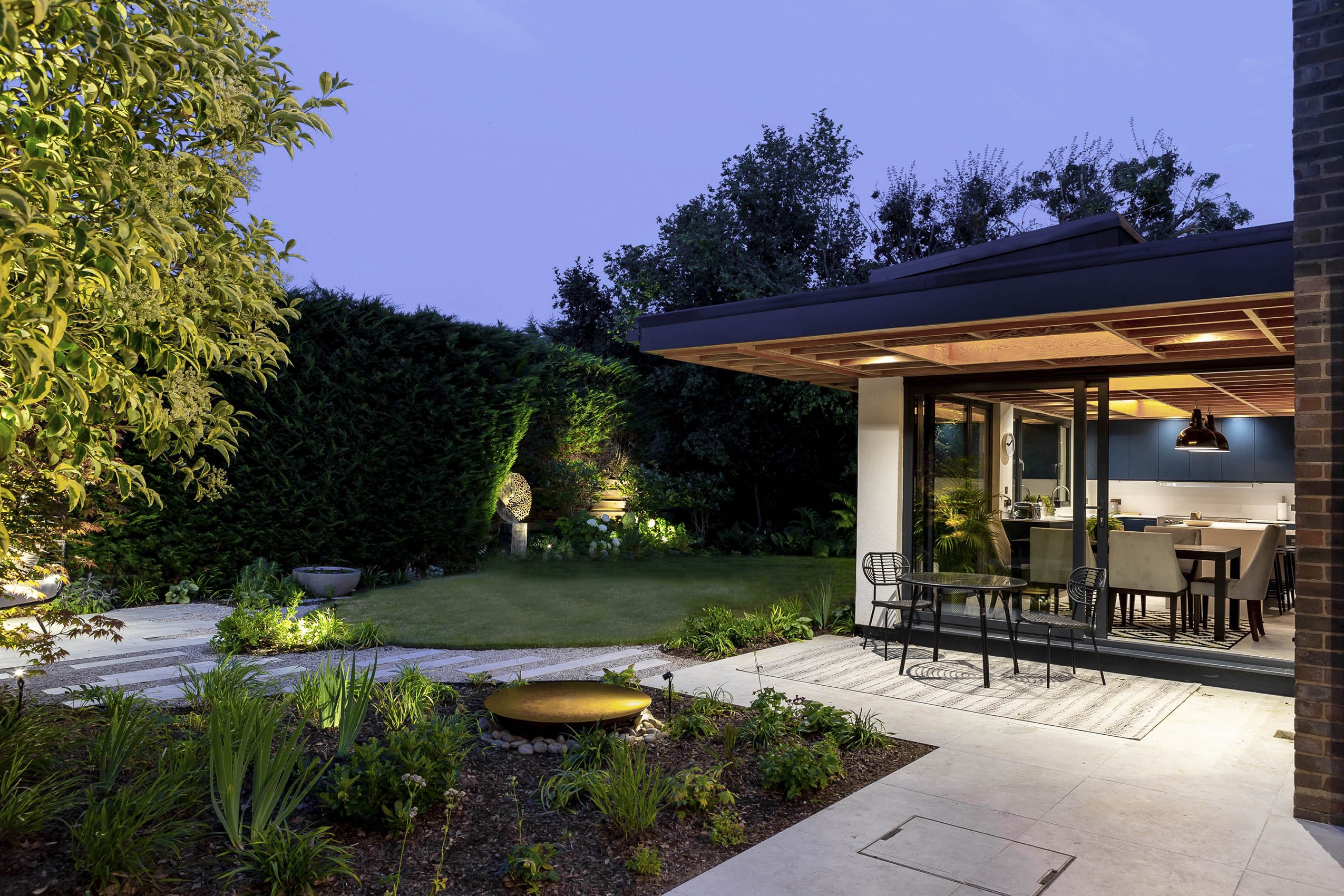
A well-thought out energy-efficient landscape lighting scheme adds a new dimension and ambience to outside spaces in autumn and winter, transforming the forms and pared-back displays of trees, shrubs and pathways.
Types of lighting.
A variety of lighting types can compliment the spaces, giving depth and making the garden easy and safe to navigate. They can also extend the feeling of space between indoor and out and be wonderful to look out on from inside.

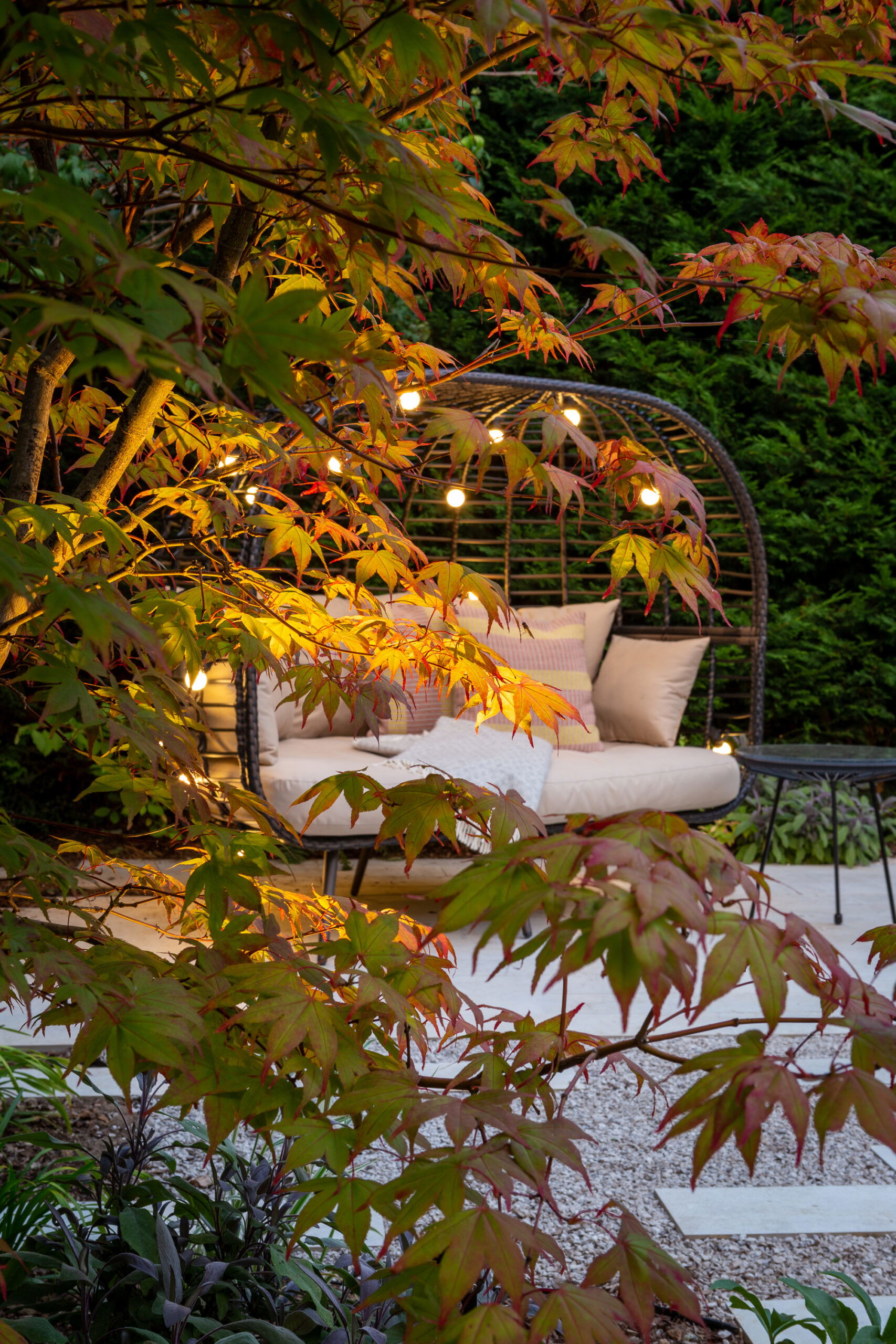
In the Oxfordshire project below, ambient lighting has been designed to sensitively illuminate each garden ‘zone’ – entertaining, eating, firepit and hot-tub – with a brief to enable enjoyment well into the evenings. The lighting design has been in collaboration with Neil Parslow Design and Light Visuals.
Integral lighting is woven through the pergola and hot tub through recessed LED strips and ribbons underneath the benches and flooring. All the lighting in this garden is controlled by switches managed remotely by tablet or mobile phone, minimising energy wastage.
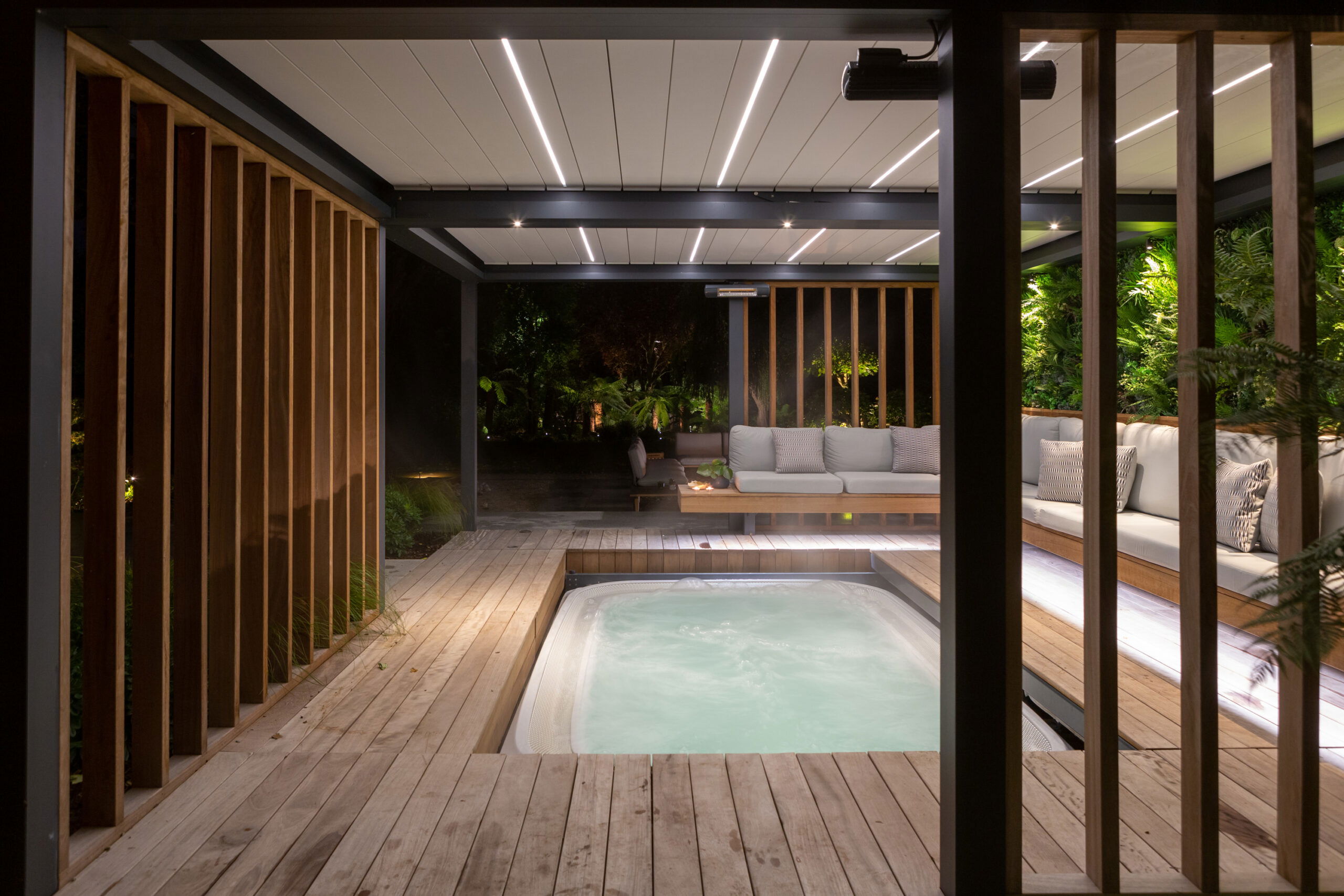
Across the top terrace, small shrub lights illuminate and cast attractive shadows across the plants and borders. Uplighting allows dappled light to be thrown through the plant fronts with the mix of greens complimenting the hues of wood and stone.
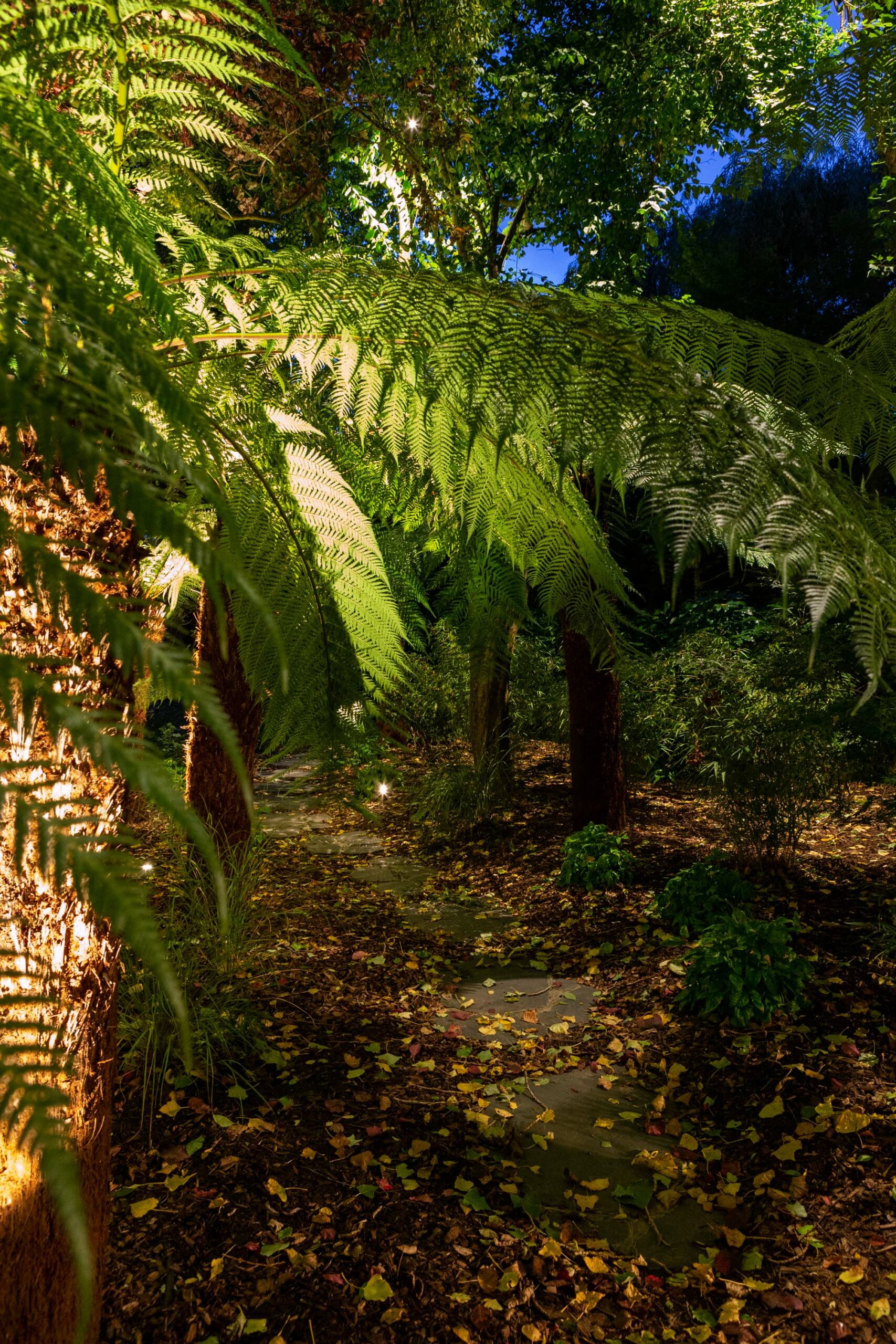
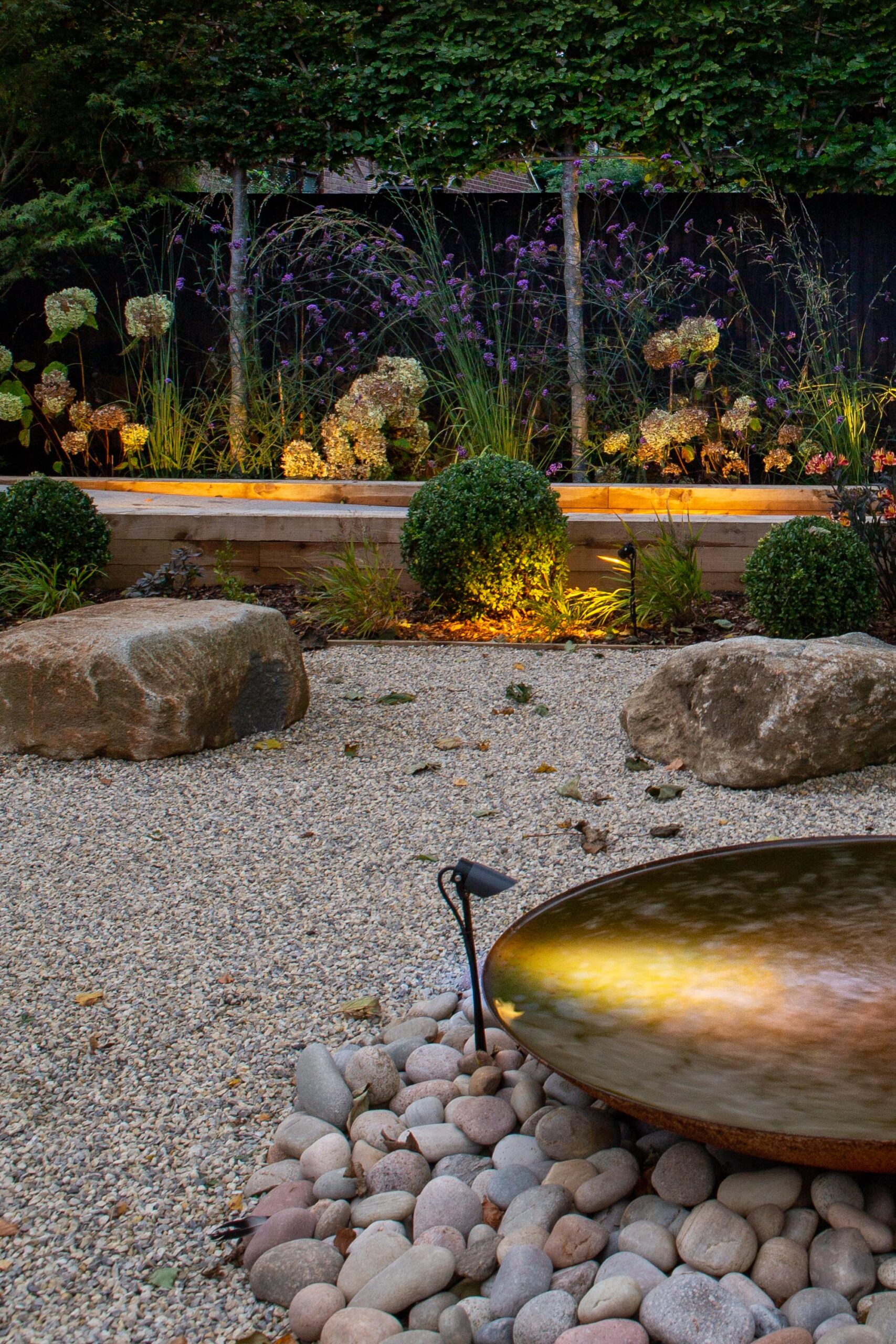
Around the outdoor kitchen, pizza oven and bar, wall lights give soft yet directional light for food preparation and eating.
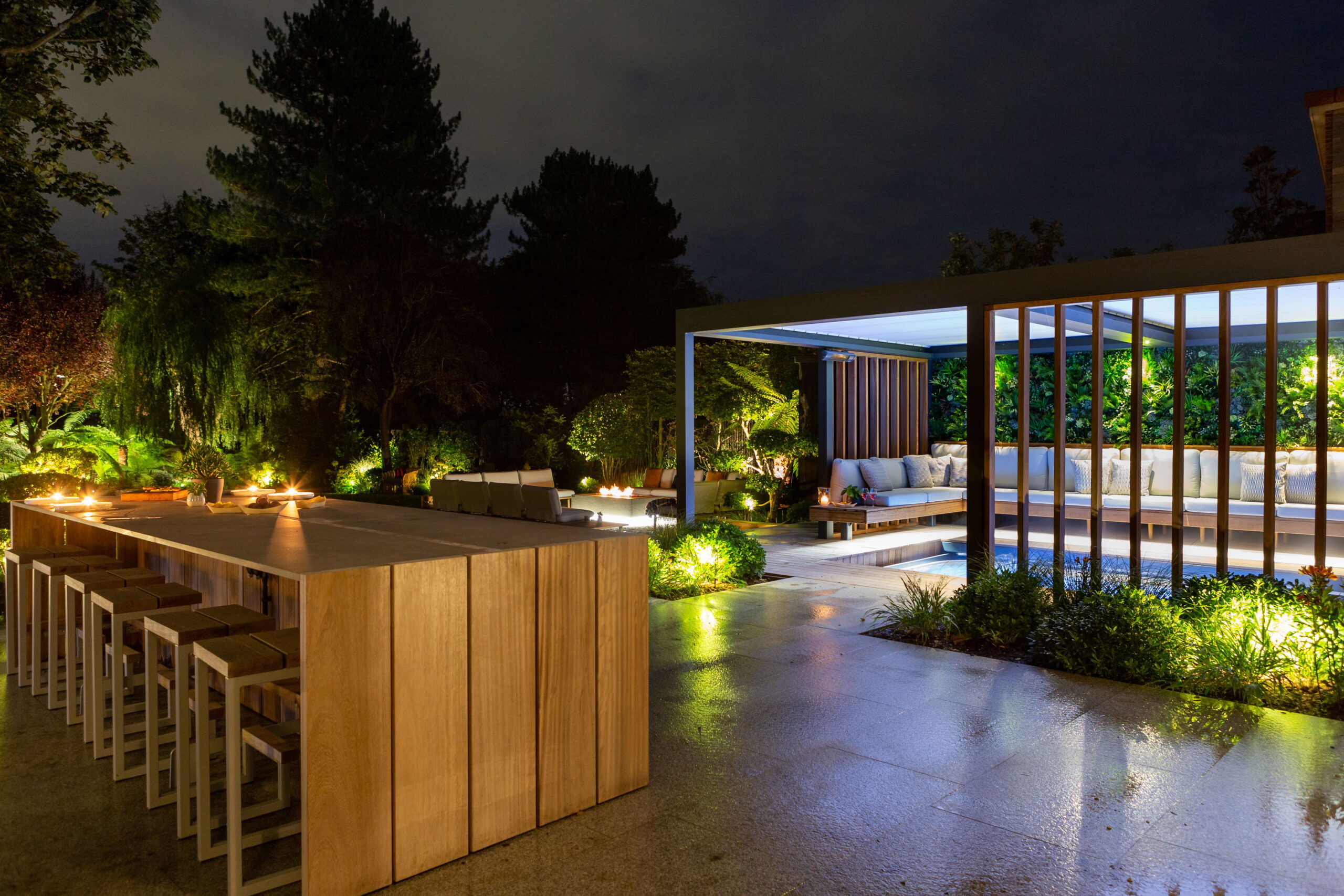
Under lighting has been placed around the fire pit, allowing beams to dance off the pale granite chips floor. Small uplights nestle each side of the borders whilst short pole lights are placed to give soft guiding light down the paths.
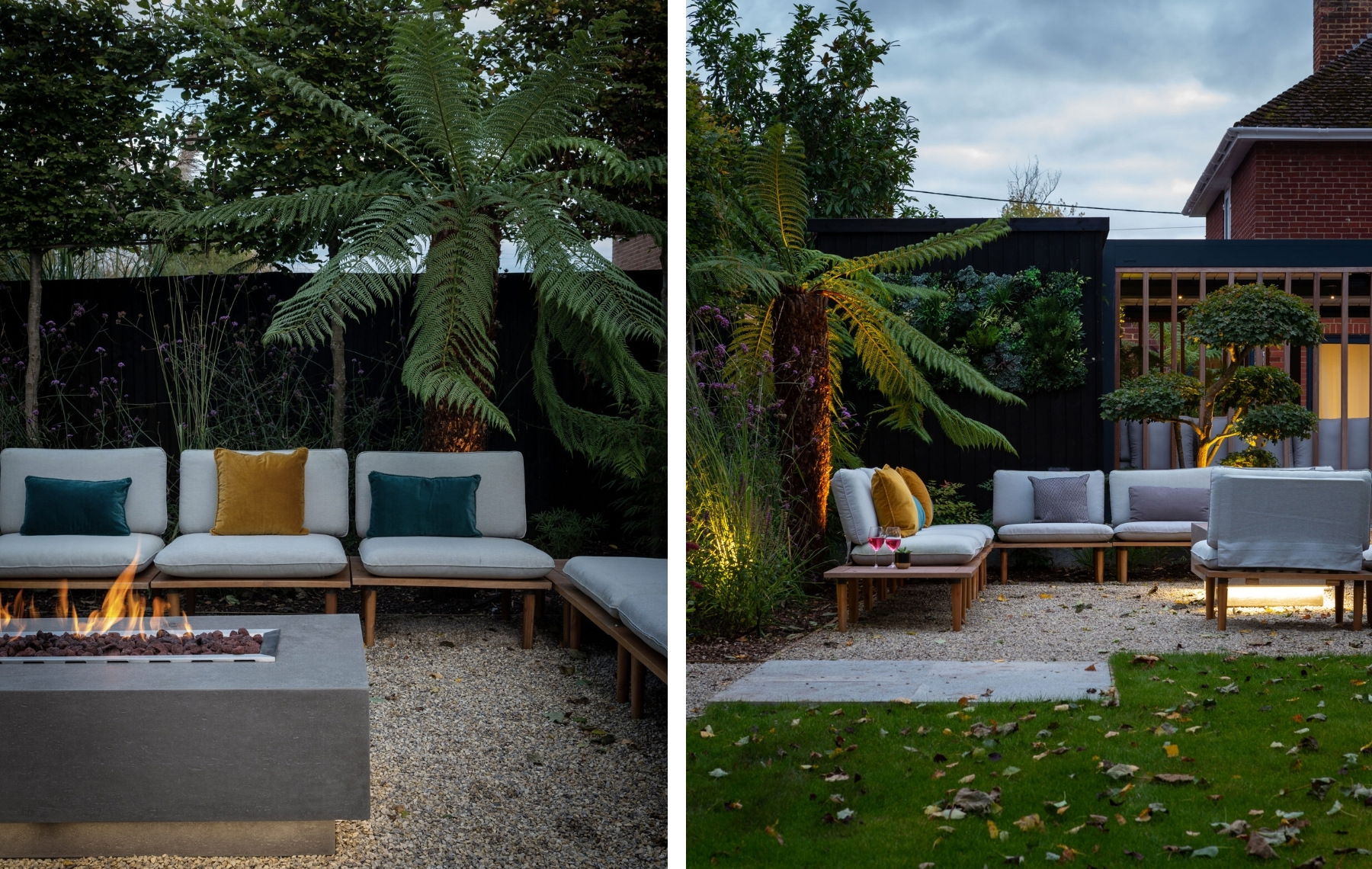
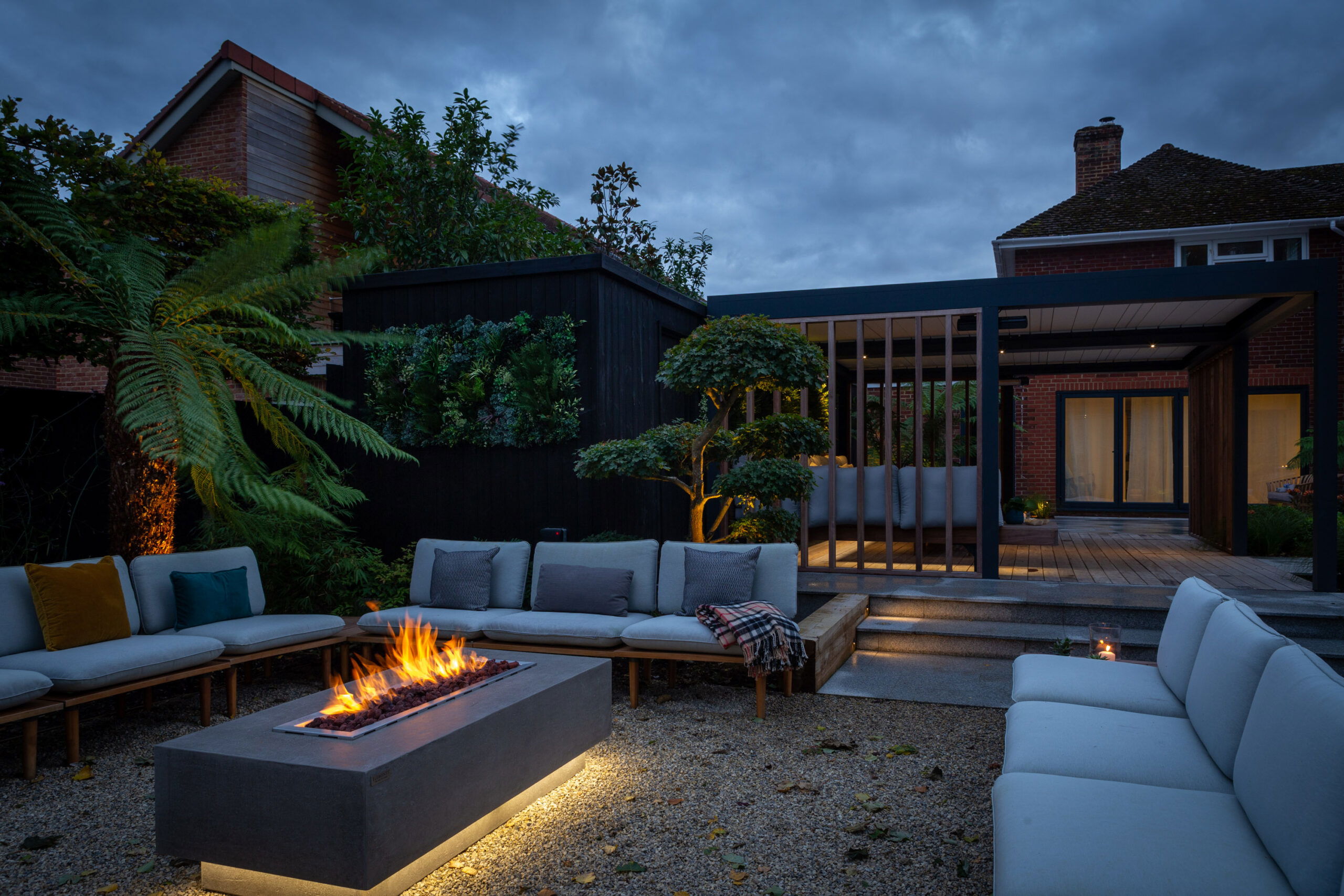
Uplighting.
Uplighting is a useful – and if desired dramatic – technique to highlight the focal points in a garden. Usually situated at ground level, these upward-facing lights can be orientated at the architectural or planting features or used to add contrast to flat surfaces like walls and fences.

Lighting mature trees creates depth and scale. Trees with an open-limbed structure – hardwood trees like ash, oak and willow – work well with light sources installed close to the base of the trunk, where the light can illuminate the branches (and leaves, in summer). For trees with tighter, more compact silhouettes like evergreens and box, light source placed away from the base allow the outside of the canopy to be illuminated instead.
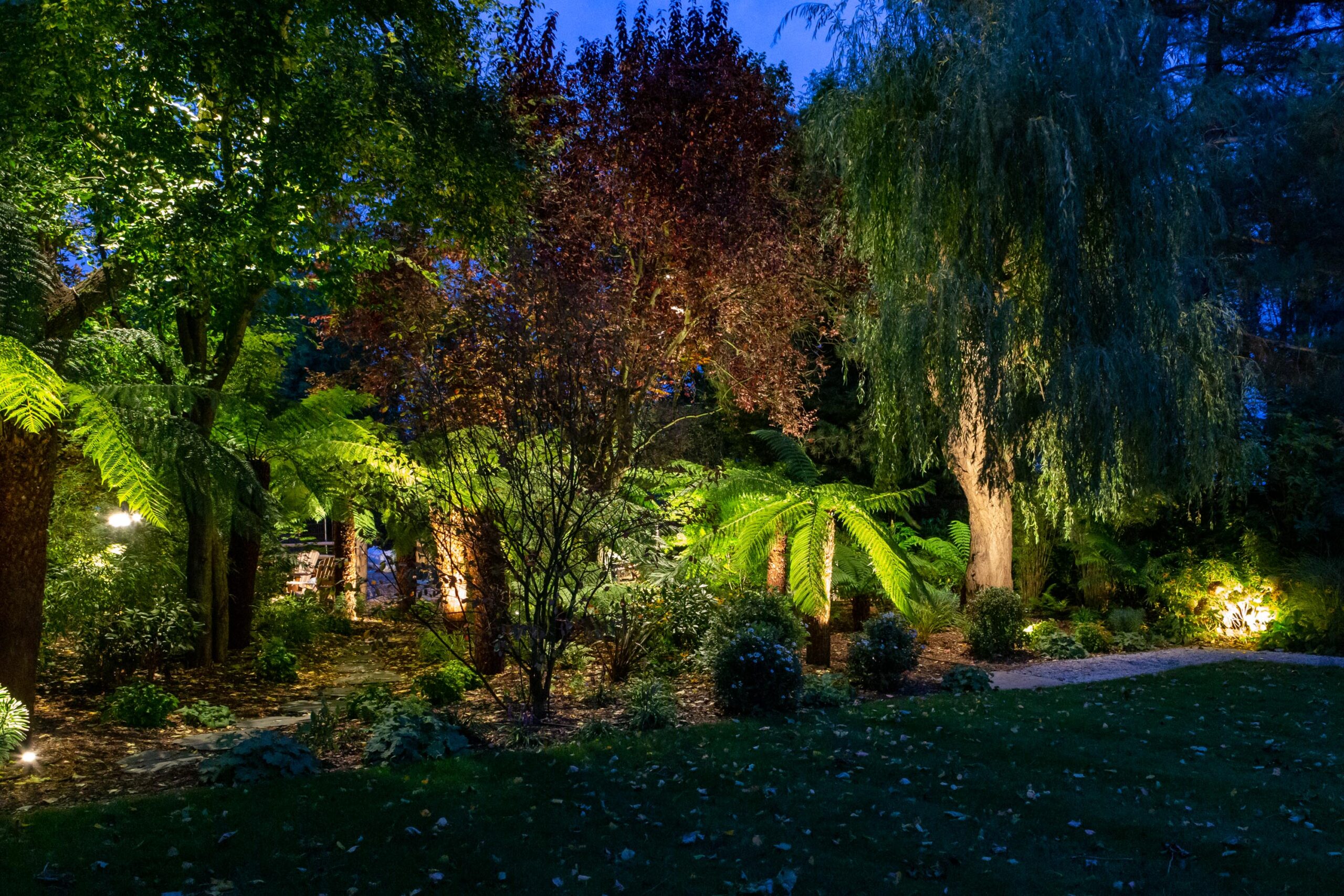
Spotlights.
Bullet or spotlights cast a narrow directional beam to draw attention to a specific feature, while ‘wash’ uplights are more diffuse and perfect for illuminating walls, pathways and subtly showcasing small plants and shrubs.

Ambient Lighting.
Ambient lighting provides a cosy glow around seating areas that is ideal for entertaining. Invisible lighting – to illuminate the underside of benches, for example – can be a series of well lights installed slightly below ground level. With a structure such as a pavilion or a water feature, diffuse downlighting can create a tranquil, ‘moonlit’ effect. Lighting pathways using a combination of directional and ambient lights can be sited in a landscaped bed for a more natural look.
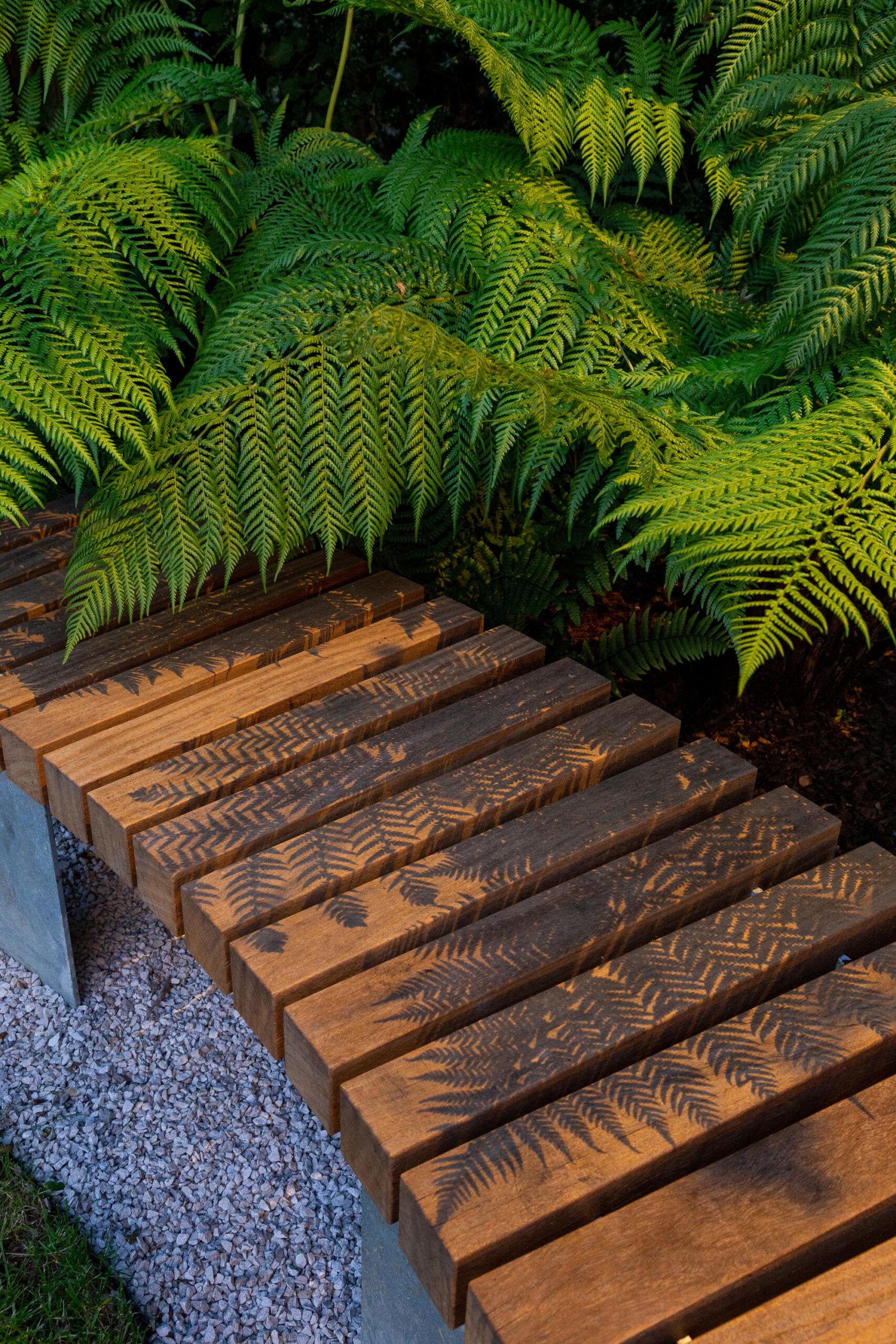
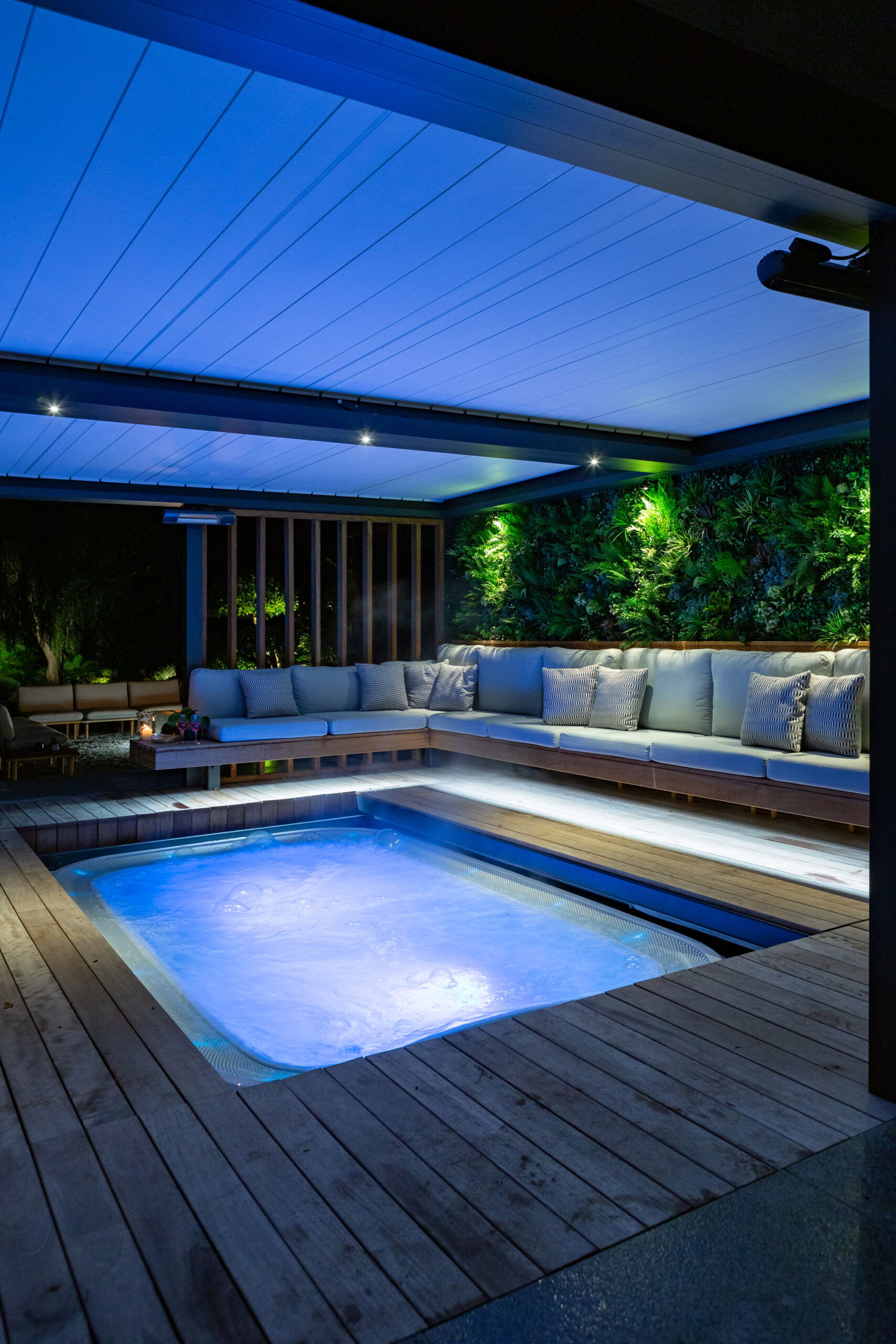
Solar Lights.
Supplementary sources such as solar lights, both in-ground and stake-mounted, can work well in lawns and borders. They offer an inexpensive, low-intensity option with no wiring and can be useful with lantern-style options for tables.
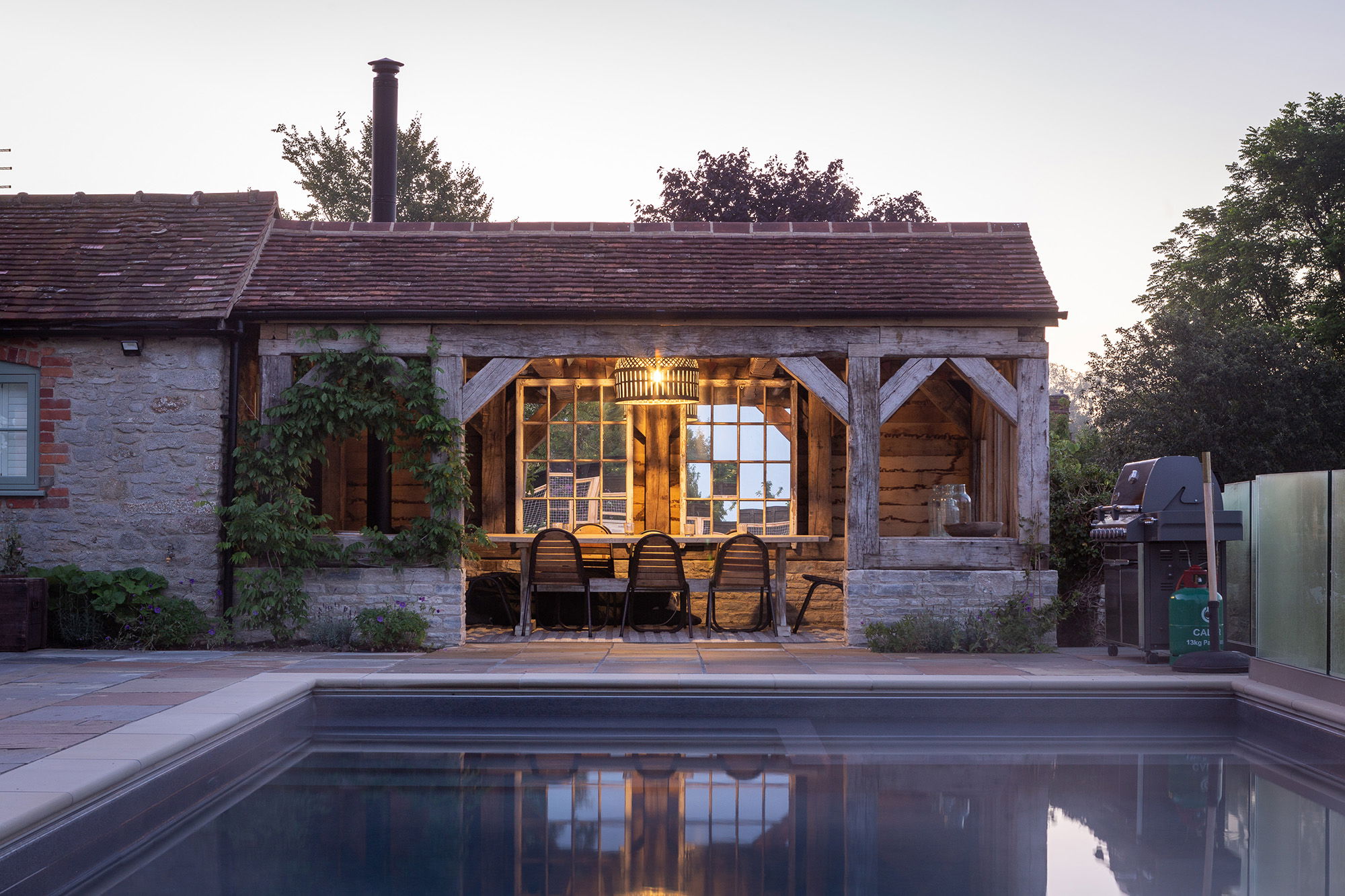
Sculptures & Art.
Lighting sculptures can bring gardens to life when the sun sets. Candles, lanterns and an open fire all add a cosy focal point that’s harder to achieve using any other light sources. Outdoor fairy lights also help to create a romantic atmosphere when hung around arbours and over trees.

Planning Landscape Lighting Designs.
It’s important to consider your garden’s lighting scheme right at the beginning of the design stage, so that the cable conduits, fuse boards and lighting duckings can be planned and installed as the hard landscaping is undertaken to ensure the most beautiful final aesthetic and avoid later costs or disruption.
Dark Night Policies.
Planning considerations are important, especially as more councils opt to implement a ‘Dark Night’ policy to reduce light pollution and preserve wildlife habitats. Different local authorities will have varying policies – some providing allowances for outdoor lighting and others encouraging complete darkness. Our Planning Consultant works closely with our Landscape Design Team to ensure these policies are integrated into our designs, optimising the spaces and avoiding disrupting the wildlife habitats.

What’s next?
We provide Architectural, Interior Design and Landscape Design services throughout the Cotswolds, London, Surrey, Oxfordshire, Buckinghamshire and Berkshire. Find out more about our Design Journey or get in touch – we’d love to hear about your design aspirations.